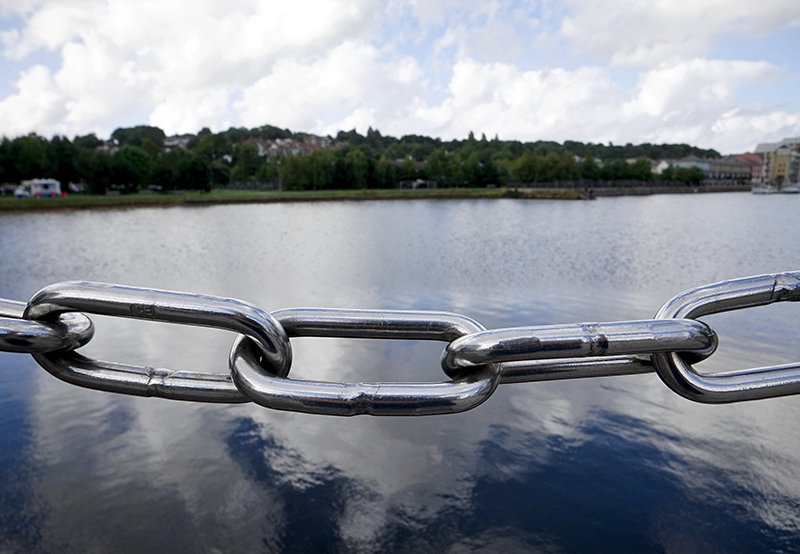
Water Insecurity in India
Posted On Tuesday, September 15, 2020 by Anvi Lohia under Sustainable Development

Water Insecurity in India
Water security, as defined by the United Nations is “the capacity of a population to safeguard sustainable access to adequate quantities of acceptable quality water for sustaining livelihoods, human well-being, and socio-economic development, for ensuring protection against water-borne pollution and water-related disasters”.1 Water security is an imperative for sustainable development. Recently, water security has been declining globally, especially in developing countries.
Currently, 2.1 billion people across the world lack access to safe sources of water at home, according to a report2 by the World Health Organisation and the United Nations. Of those, 844 million do not have even a basic drinking water and sanitation service at home. Worldwide, over 780,000 people die each year due to inadequate water and sanitation.3
The emergence of the COVID-19 pandemic has heightened the rampant inequalities in access to water security. Water insecurity puts the poorest and most vulnerable sections of society at most risk, especially during a pandemic. Frequent hand washing is a very effective measure to restrict the spread of the virus; however, many people do not have access to clean water to wash their hands. 3 billion people globally lack access to proper hand-washing facilities.4 Hence, lack of adequate water sources is a major impediment in controlling the spread of coronavirus.5 Limited hand-washing can amplify the lethality of the coronavirus infections.
In India, the second most populous country in the world, over 50% of the population does not have access to safely managed drinking water,6 and over 200,000 Indians die each year due to unavailability of safe water.7 The gaps in water access are primarily caused by Increased corporate privatisation, industrial and human waste, inefficient water management, and corruption at all levels. Across the country, the issue is significantly more prevalent in rural areas than in urban areas. The country’s sources of water are steadily declining — groundwater has been depleting for years, and two-thirds of the reservoirs are running below normal levels.8 According to data published by the World Resources Institute, India is listed amongst the 17 countries where stress due to scarcity of water is extremely high.9
Agriculture is the main consumer of water in India.Over 80% of India’s freshwater is allocated to the agricultural industry,10 most of which is used in irrigation. Agriculture is an integral part of the country’s ecosystem, employing over 50% of the workforce and contributing to 18% of the GDP.11 Water is a critical input for agriculture, but, water usage in the agriculture sector is unregulated and inefficient. Efforts to conserve agricultural water are negligible, and water usage is severely mismanaged by several channels. Mismanagement of water could lead to the risk of food and nutritional insecurity, and the loss of livelihoods of many farming families. If the agriculture industry adopts advanced technologies and innovative methods of farming, water efficiency would increase significantly. But, the Indian agriculture industry, largely, lacks the funds and infrastructure required to transition to more efficient practices. Government intervention and public and private investments would be required to enable efficient practices in the agriculture industry.
Water quality is increasingly proving to be a greater issue than access; much of the available water in Indian rural areas in contaminated and not fit for drinking. More than 25,000 habitations of groundwater are contaminated with excessive levels of fluoride and arsenic.12 Arsenic and Fluoride both pose severe threats to human health: arsenic is carcinogenic and could potentially lead to several types of cancer, while fluoride could induce early ageing and lead to skeletal and dental fluorosis. Contaminated water is also linked with numerous waterborne diseases including cholera, diarrhoea, dysentery, typhoid, and polio.13 According to data from the world bank, nearly 21%14 of all communicable diseases in India are linked to water.
The Bundelkhand region in north and central India is especially prone to frequent droughts. Bundelkhand has a granite topography which does not allow any rainwater to seep in, making it difficult for the region to meet its water needs.15 Low-Income families are hit the hardest by the water shortages in Bundelkhand. The hand-pumps in the region are mostly dry, and the working ones often yield dirty water.16 The residents of many districts in Bundelkhand have to walk several kilometres to reach the nearest water tankers. The time spent on collecting water could otherwise have been spent on other more economically productive tasks. Moreover, the water comes at a cost of 2-2.5 rupees per can, which many families cannot readily afford.17 The region now faces an acute water crisis, aggravated by the COVID-19 virus.18 The central government has recently sanctioned 10,000 crores ($1.36 billion) to mitigate the crisis in Bundelkhand, which could potentially make a significant difference in the availability of safe water in the region.19
In 2019, Chennai, a major Indian city and the capital of Tamil Nadu faced an acute water crisis — it ran out of water. The four major reservoirs supplying drinking water to the city had completely dried out due to delayed monsoons. This affected low-income families disproportionally as the middle and upper classes could afford to pay more than twice the earlier rates for water from private tankers. The shortage led to disruptions in many businesses, including restaurants, hotels, hospitals, schools, and production industries.
Water insecurity also poses a threat to India’s emerging economy. Water is intrinsically linked to economic growth. It is an essential resource for production of electricity, food and most manufactured products. The implicit economic consequences of water insecurity in food insecurity, conflict and migration, and financial instability. By 2025, India’s demand for water is expected to increase by over 70%.20 Primary factors for increased demand include population growth, urbanisation, changing diets and changing energy needs. 21 This would result in a large demand and supply gap and could thus pose a significant hindrance to India’s economic growth.
For India to truly progress, it is critical to address India’s acute water insecurity. The emergence of the COVID-19 pandemic has highlighted the urgent need for the government to prioritise equity in access to water and sanitation facilities. India must develop and embrace innovative and intelligent water solutions to fight such an acute crisis.
References
1- What Is Water Security?. UN, 8 May 1970, www.unwater.org/publications/water-security-infographic/.
3- UNESCO, UN-Water, 2020: United Nations World Water Development Report 2020: Water and Climate Change, Paris, UNESCO.
4- https://www.unwater.org/who-and-unicef-launch-updated-estimates-for-water-sanitation-and-hygiene/
5- Lee, Heesu. Covid's Spreading Fast Because Billions Don't Have Water to Wash. BloombergQuint, Bloomberg Quint, 10 Aug. 2020, www.bloombergquint.com/coronavirus-outbreak/covid-s-spreading-fast-because-billions-don-t-have-water-to-wash.
6- https://www.unicef.org/india/what-we-do/clean-drinking-water
7- Composite Water Management Index NITI Aayog, Aug. 2019, niti.gov.in/sites/default/files/2019-08/CWMI-2.0-latest.pdf.
8- Brief Note on Live Storage status of 19 reservoirs in the country” Central Water Commission, Government of India.
9- http://202.159.215.252:83/DocumentUploadRoot/DocumentId_32837/20.06.2019_CWC_Bull.pdf
10- https://www.wri.org/resources/data-sets/aqueduct-30-country-rankings Sen, Sandip. “80% Water Consumption in India Is for Agriculture, Why Is It Unregulated and Inefficient?” ORF, www.orfonline.org/expert-speak/if-80-water-consumption-in-india-is-for-agriculture-why-is-it-unregulated-and-inefficient/.
12- Time-Bound Plan Needed to Address Contaminated Water. Mongabay, 10 Jan. 2019, india.mongabay.com/2019/01/time-bound-plan-needed-to-address-contaminated-water/.
13- https://www.who.int/news-room/fact-sheets/detail/drinking-water
14- The World Bank, documents1.worldbank.org/curated/en/586371495104964514/pdf/115133-WP-P152203-PUBLIC-17-5-2017-12-28-1-WaterlifeCaseApril.pdf.
15- Bundelkhand Stares at Acute Water Crisis. Hindustan Times, 7 June 2020, www.hindustantimes.com/india-news/bundelkhand-stares-at-acute-water-crisis/story-6YdaJzthwqHhetonpXCrkL.html.
16- ibid
17- ibid
18- Srivastava, Prashant, et al. Water Woes Are Peaking in Bundelkhand and It's a 'Bigger Crisis than Covid Can Ever Be'.ThePrint, 21 June 2020, theprint.in/india/water-woes-are-peaking-in-bundelkhand-and-its-a-bigger-crisis-than-covid-can-ever-be/443226/.
20- India Policy Brief: Improving Water Security. Organisation for Economic Co-Operation and Development, OECD, 30 Nov. 2014, www.oecd.org/india/India-Improving-Water-Security.pdf.
21- WWAP (United Nations World Water Assessment Programme). 2015. The United Nations World Water Development Report 2015: Water for a Sustainable World. Paris, UNESCO.
Recent Articles
- James Silverman ( Founder, U&I Global) interviews Arpit Chaturvedi (Co-founder and CEO, GPI) on AGENDA 2030- DO WE WANT IT? CENTRALISATION AND THE SDG’S
- Big Tech on Section 230 – Censorship or Disregard?
- Global Policy Insights (GPI) Annual India Colloquium.
- Antitrust hearing only a beginning on accountability
- The Commonwealth: Optimising Networks & Opportunities for the 21st Century
- Population Data in the Time of a Pandemic
- The Disconnect with Ground Realities
- Models to Make Vocational Training Work in India
- Comparing Health Care Systems in England, Taiwan, and the United States
- Commonwealth In Dialogue : Academic Series
- Are we rewarding fence-sitters and free-riders by relaxing penalties on CSR law violations?
- Changing Economic Models: From Mixed Economy to Liberalization, Privatization, and Globalization in India
- Goods and Services Tax (GST) – a Seventeen Year Ordeal to a Uniform Indirect Tax Regime in India
-
Commonwealth In Dialogue: International leader Series
Podcast: Patsy Robertson, Chair Ramphall institute in conversation with Uday Nagaraju, Executive President and Neha Dewan, Fellow & Researcher about Commonwealth - Creating a future-proof curriculum for the digital age
- Commonwealth In Dialogue: High Commissioner Series": H.E Dr. Asha-Rose Migiro
- High Commissioner of the United Republic of Tanzania to the United Kingdom & Republic of Ireland in conversation with Uday Nagaraju, Executive
- Commonwealth In Dialogue: Parliamentary Speaker Series
- Louisa Wall - Marriage Equality in New Zealand
- Hon An치lu Farrugia, Speaker of the House of Representatives Parliament of Malta & Secretary General CPA Small branches speaks to Uday Nagaraju, Executive President & Co-founder of Global Policy Insights on Commonwealth, CPA Small branches and Parliament of Malta
- Commonwealth Series: Cyprus High Commissioner to the UK H.E Euripides L Evriviades interviewed by Uday Nagaraju, Executive President Global Policy Insights & Neha Dewan, Fellow & Researcher
- Global Policycast: Ex-Minister of State in the Ministry of Agriculture and Lands- Victor Cummings interviewed by Arpit Chaturvedi, C.E.O Global Policy Insights.
- Global Policycast: Ex-Minister of Youth, Paraguay- Magali Caceres interviewed by Arpit Chaturvedi, C.E.O Global Policy Insights.
- Commonwealth Series: CPA Secretary-General Akbar Khan interviewed by Uday Nagaraju, Executive President Global Policy Insights & Divya Pamulaparthy
- The Perils of Decentralization and other Buzzwords in Governance and Policymaking

